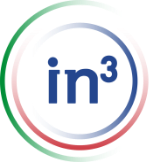PERFORMANCE = Motivation + Accountability + Capability
The Performance Model provides a framework to address the factors that affect human performance.
Motivation
Will the organization do what’s expected?
Motivation is the desire or passion to execute. An organization may know what to do, have the ability to do it, but still fail because of lack of passion. Wise leadership, with a rich understanding of organizational culture, drives motivation by manipulating cultural levers. Accurate understanding of Culture makes good leaders great. Over the long run, motivation is a function of “fit.” No matter what the ability, the better an initiative or individual fits a culture’s inherent strengths and weaknesses, the better the motivation.
Accountability
How is the organization structured? Will it naturally execute on what’s expected?
Accountability is the accurate understanding of the environment that is expected to deliver performance. Accountability includes Strategy and Operating Model aspects such as Structure/Process/Job design, Goals, Measures, and Policies/Procedures/Programs. These factors, in proper alignment, can substantially impact an organization’s performance. The fit between employees and these contextual elements directly impacts performance.
Capability (Competence)
Can the organization do what’s expected?
Ability is the capacity to execute. The organization may know what to do and be willing to do it, but fail due to lack of ability. A Competency Model should capture both the ability possessed and the ability required by the organization. Packaged competency models do not reflect unique organization nuance and capability. Analysis of competence identifies strengths that drive great performance and the gaps that cause poor performance. This provides the road map for developmental, motivational and contextual intervention.
How does in3 Consulting apply the Performance Model?
Accountability
The organizational environment is assessed through proprietary culture and process analysis tools, field-tested over many years at major US consulting firms. The result is a clear picture of the contextual conduit through which strategic intent must pass for the initiative to be successful. This output enables us to structure initiatives to match up well with inherent organizational strengths and avoid anticipated weaknesses. It also identifies where Accountability should be adjusted in order to support such initiatives.
Capability
The organization’s ability is assessed. What is the quality and utility of preexisting competency models and/or skills inventories? Are they still relevant? Is the competency model theoretically based and carefully defined so that business decisions can confidently be made based on competence information? What training currently exists to enhance strengths and close gaps? This information enables us to identify and develop appropriate communication and training. We teach companies and individuals to play to their strengths while closing their performance gaps.
Motivation
Jobholders are assessed using appropriate tools, depending on the focus and size of an initiative, such as as Culture, Competency, Skill, Brain Typing, Meyers-Briggs or Learning Styles instruments,. The resulting output enables us to map the jobholder to the change initiative, predict “Fit,” and structure the most appropriate change activities.
The complete approach
Through our partners, in3 can provide an even more holistic approach integrating strategy, emotional branding, and brand implementation on the front end, with robust motivational systems and performance management on the back end.
